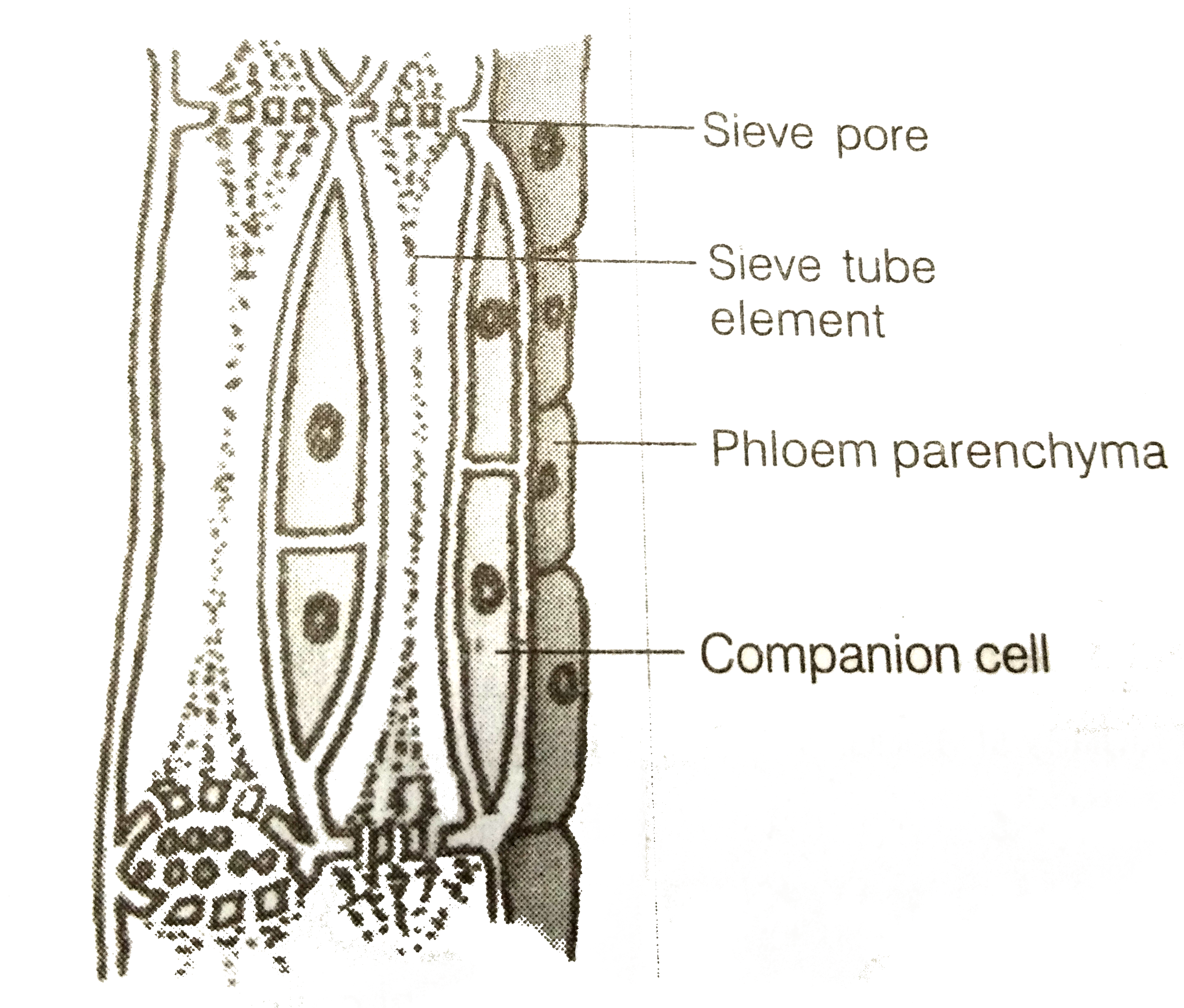Write the precise function of
(a) sieve tube
(b) interfascicular cambium
(c) collenchyma
(d) aerenchyma.
Sieve tube
It is present in the phloem tissue. It's function is the transporation of synthesised food through out the plant

Interfascicular Cambium
In's function is to bring about secondary growth in the dicot stem and root. It is a kind of secondary meristematic tissue present in between two vascular bundles.

Collenchyma
It's function is to provide mechnical support to young growing herbaceous stem. It's cells have angular thickening at corners.
(#ARH_NCERT_EXE_BIO_XI_C06_S01_042_S03.png" width="80%">
Aerenchyma
It provides buyoncy to the hydrophytic plants. It is a specialised parenchyma having large air spaces.
 .
.
Topper's Solved these Questions
- ANATOMY OF FLOWERING PLANTSBOOK - NCERT EXEMPLAR ENGLISHCHAPTER - ANATOMY OF FLOWERING PLANTSEXERCISE - Long Answer
6 Videos
- ANATOMY OF FLOWERING PLANTSBOOK - NCERT EXEMPLAR ENGLISHCHAPTER - ANATOMY OF FLOWERING PLANTSEXERCISE - Very Short Answer
13 Videos
- ANIMAL KINGDOMBOOK - NCERT EXEMPLAR ENGLISHCHAPTER - ANIMAL KINGDOMEXERCISE - LONG ANSWER TYPE QUESTIONS
4 Videos
Similar Questions
The chief function of sieve tubes is
View SolutionSieve tubes are constituent of
(a) Wood
(b) Vascular cambium
(c) Phellem
(d) Bast
View SolutionDifferentiate between Collenchyma and aerenchyma
View SolutionDifferentiate between Collenchyma and aerenchyma
View SolutionThe cell functionally associated with sieve tube is -
View SolutionDifferentiate between Fascicular cambium and interfascicular cambium
View SolutionDifferentiate between the following
Fascicular and Interfascicular cambium
View SolutionP-protein occurs in
(a) Sieve tube elements
(b) Tracheids
(c) Vessels
(d) Phloem parenchyma
View SolutionWhich one of the following acts as water storage tissue in succulent plants ?
(a) Parenchyma
(b) Aerenchyma
(c) Angular collenchyma
(d) Meristem
View SolutionGrowth rings are formed by the activity of
(a) Extrasteral cambium
(b) Intrasteler cambium
(c) Interstelar cambium
(d) Both b and c
View Solution
